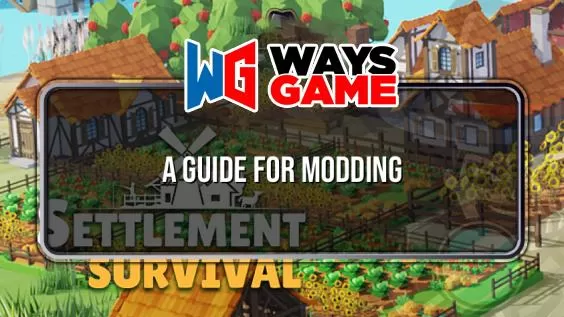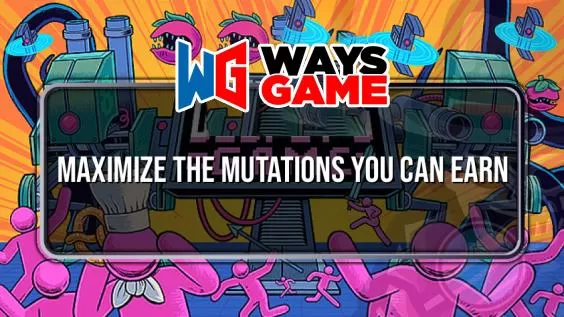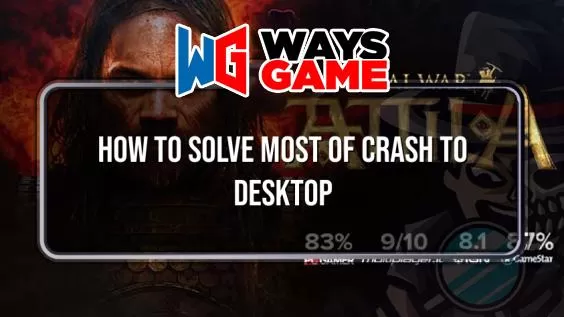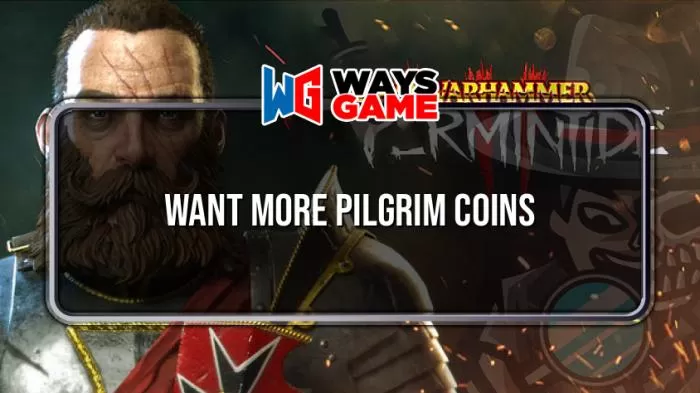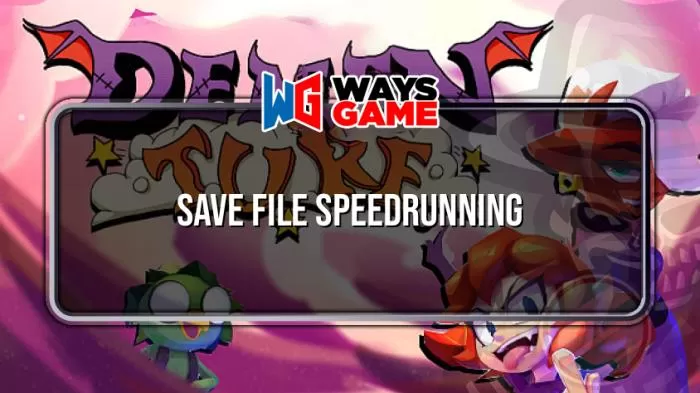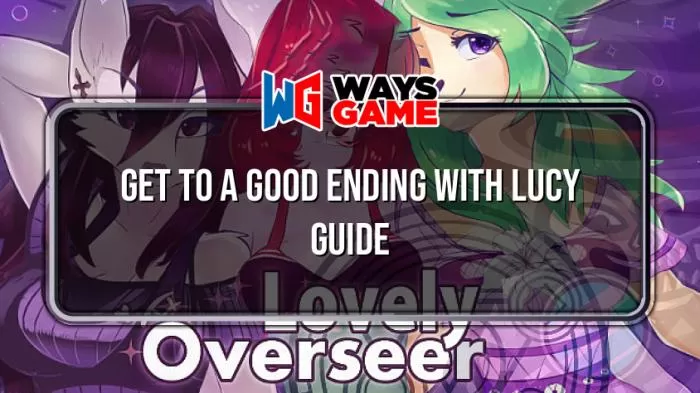Are you sick and tired of making minuscule profits? Not sure what your goals are, how to achieve them, or what you’re doing? Are you trying to run a nice little village, but everyone seems kind of stupid and worthless?
Welcome to my guide for Lords and Villeins!
I’ll help you make sense of things.
This guide aint pretty, but what else you got?
DEV NOTE:
Just a few things I think can improve the game:
This guide took a lot of time and effort, because of the lack of ability to see relevant information such as the price/weight of goods on most ui windows. Also, there is no economy tab that gives you an overview of what was sold to where and for how much. For a game about managing economic forces, this makes understanding the game mechanics take a lot of user effort looking at a lot of different ui windows just to see how much production is needed to do what you want to do. This in turn makes running your economy difficult, because you simply don’t know what to look for, on which ui screen, or why that information is important.
The economy mechanics are quite advanced, giving more than enough gameplay challenge even if you could have relevant information about a buildings production/expenses and their monetary values all in one place. I would like to be able to make an economic decision for any one place without going back and forth between the build screen for production ratios, the market price screen, and the accounting screen. The user’s ability to make estimates on what/when they should be producing feels like wild guessing at this point, unless you know where to look.
It would also make sense to be able to see an overall report for movement of goods/money in the entire town calculated per season. This is all information that is already being calculated in the game, but either isn’t being shown to the player at all, or showing you partial information over many screens. The challenge in the game is good. The ability for the user to meet that challenge is affected by their inability to know what a good strategy might be. I hope that we get to see these changes, because this game is pretty great and has ma*sive potential.
Further opinions, guesses, and suggestions are italicized below.
On to the guide…
THE 5 LAWS OF ECONOMICS IN LORDS AND VILLEINS
There are 5 basic things to keep in mind in any scenario;
1. There are two types of commerce going on in this game: Commerce that distributes resourses around, and commerce that adds/removes value. You need to engage in both, but the mechanics are different, so we’ll figure out which to do for which location and when.
2. At the start of the game, and for a long time afterword, your peasants are incapable of making a sale/purchase that adds value to the local economy. It is your job as the Lady/Lord to change this. Until you change this, it is also your job to add value to the economy.
3. Besides the inn, the only way to bring money into the local economy is by selling to caravans. Each family brings some money when they move in to start out, but not enough to have hoarding families be a viable long term be a strategy.
4. Potential profits are not profits. Having a production chain that doesn’t sell to a caravan has no economic benefit. There are many ways this can be a drain. Ex. Making bread to sell/give to peasants just means that the cost to make a meal is now more time, more labor, and more money (if you’re having villeins buy food) . Luxuries are for nobles, caravans, and moneymakers, in that order.
5. You must recoup the costs of any transaction that involves money. Always. This goes for anyone doing a purchase, villein or lady/lord.
LETS TALK ABOUT MONEY
How should I distribute resources?
Well, your options are to take stuff and dole it out through taxation and warehousing, or to delegate that distribution by having people use money to exchange in between themselves.
Peasants using money comes with a lot of downsides actually, because each family will have one person sitting around all day pretending to sell things, and not doing any work. You want the peasants to spend their time turning labor into useful stuff. Peasants dealing with money means they can only siphon money away from other families, and you would have to correct for this. The more times you have a villein spend money, the more times you have to add to how much they are getting paid to recoup losses. This means you’re probably doing a lot of guesstimating right now because there’s no good way to see this balance on screen.
Money in a mostly closed system, like in your local economy at the start, serves only as a means of distribution. This makes money an optional good that takes time away from work, makes your tax schemes more complicated, and doesn’t actually benefit anyone. For the early game at least, this changes later. Also the early game lasts a long time, much longer than you might expect.
Letting peasants play with money before they need to means they can leech money out of the local economy to the caravans on consumables like food and clothes and sometimes tools. This means a peasant cannot add monetary value to the local economy, but they can remove it. This fact changes when you can get a production chain that makes money from caravans, but not before.
So early game, set everyone to stewardry, and tax their house for the same amount. The amount of money in town is fairly static (if you’re careful) before you can sell to the caravans, so don’t make it complicated. Put everything for free at the warehouse. Don’t try and make money for anyone, its completely pointless until you can sell to the caravans, which coincidentally, only the lord/lady can do at the start. Two wins, no losses.
EARLY STRATEGY
Now everyone can build their homes and work places without any interference. You can make things look good later, just get them going. You don’t even need roofs til fall, and floors are there to improve your villeins mood, so obviously skip those for now. The peasant cla*s wants a warm place to sleep and 2 normal meals a day to be in a good mood. Clothing helps.
Once those are up, you need an inn. As far as I can tell, making the inn pretty effects the number of families that visit by way of your reputation, but it doesn’t matter right now anyway, so skip the floors here too for now. Inns add small amounts of money into your local economy through visitors and caravans. This is the only way to grow your economy right now. You won’t be impressed with how much for quite a while. Make sure there are two cooking tables and 2 cauldrons, with enough people to nearly constantly run them and bar, and your inn will make a tidy profit.
At this point build a few public spaces around town so people can socialize/warm up when winter arrives. Just some benches and a campfire in each will do.
Now that you have a working inn, you can attract families. If they farm, fish or forage, take as many as you can, even foragers can have a berry farm. These jobs make the stuff you survive with, which is your only expense right now, so get them. Put these a reasonable distance away from your future town center. Under stewardry, your peasants only haul stuff once per season, so put them close enough to get food from the warehouse, far enough away they won’t interfere with your smaller production chain buildings in the future.
Get a tailor. It doesn’t matter if they sit around doing nothing all day, it will make sense later. Don’t get any other family besides farm/fish/forage. Build the tailoring shop onto the tailor’s house. Try to plan its location to be between the warehouse and the farm that will supply sheep.
Production chains take a long time to get going, and cost money/resources until they are viable.
Your first goal is to get needs met. Your second goal is to bring money into the economy. Milling/Baking can fulfill the second goal, but it they are a hugely wasteful and complicated way to accomplish the first. Don’t even think about a butcher.
You need to make sure you are solvent on food. Villeins eat twice a day, and prefer normal meals almost always. They will eat simple meals rather than starve, but will avoid them if they can. This is why they will buy cheese/butter/meat at the caravan when they could have made simple meals.
FOOD MECHANICS (contains math, skip to avoid)
As far as I can tell, simple meals and normal meals take the same amount of ingredients (calculated in weight) for the same amount of food. Simple meals are single ingredient and make your villein’s mood plummet, while normal meals need roughly half and half by weight in two food categories. Check the tutorial book under Cooking to find out about food categories.
Each recipie needs roughly 750 grams of food for 3 meals worth 250 grams each. So everyone needs 500 grams of food per day. There will be waste, since villeins will take whatever foodstuffs available and use at least 750 grams to cook with, so usually more like 775 to 850 grams per recipie. For instance, 4 potatoes and 2 corn will make 3 normal meals, where I’m pretty sure 10 potatoes will make 3 simple meals. So a family of 3 needs at least 120 potatoes and 60 corn per season. This calculates out to 15000 grams of food stuffs in a season per villein, at minimum. You can find some of the weights in the farmland priority screen, but other foods you have to find a storage and do the math. I wish there was a way to get this information besides watching a villein do stuff, but there isn’t so this is at best a good estimate for food production needs.
Food that grows in adjacent seasons can be planted more often. A potato plant can’t grow in summer so it can’t be planted on the 13th day of spring, but a carrot can. Crops are also affected by soil quality. As far as I can tell, perfect soil either takes 3 days off a growing time, or halves it. I only tested a few plants, and unfortunately they all had 6 day growing times, but grew in 3. As in exactly 72 hours for a rice or carrot plant. This is a huge bonus that should be taken into consideration.
Good quality soil is easy to maintain away from perfect river soil if all other adjacent non-crop plants are cut. Good quality soil seems to either take 1.5 days off the grow time, or a quarter of the grow time. I’m honestly not sure which, and finding this out took a lot of time for a mechanic that is already being calculated in game. I’m a*suming percentages apply here, because otherwise a parsnip in perfect soil would take one day.
Let’s a*sume we are maximizing harvests. So in order of maximum food weight grown per year in average soil, it goes rice, corn, carrots, cabbage, parsnips, melons, pumpkins.
In good soil, we get rice, corn, carrots, and then pumpkins (doubled from average soil) a three way tie for potatoes parsnips and cabbage, and melons (tripled).
In perfect soil, we get rice, corn, carrots, melons (5X as much from average), pumpkins (tripled from average soil), then cabbage/parsnips and potatoes last.
This means crops benefit from better soil in different ways. The increase from good soil from most affected to least affected are melons by a lot, pumpkins by a commanding 2nd, potatoes, parsnips and then cabbage rice, corn, and carrots all receiving the same multiplier effect. Cabbage has a slightly bigger increase compared to rice, corn and carrots in good soil.
Grain is a little different, because to make bread, grain loses 53.3 percent weight when made into edible food. It also takes ma*sive amounts of work to flail, mill and bake.
Here’s a rough graph I made for crops, fertility, and food per season, a*suming maximum harvests. The soil quality advantages are my best guess. This is for one crop tile, where the numbers under soil harvest are weights in grams are per year, and increase is the ratio difference in soil quality. I would make this nicer but I don’t know how.
FOOD TIPS
Grow times effect how much work has to be done. Let’s say one of your farmers can tend 30 pumpkin crops, but only 15 parsnip crops. These aren’t real numbers, but a crop that takes 10 days takes a lot less work than one that takes 4. I would guess that a single farmer can reasonably farm 20 tiles. So try to make your farming areas with that in mind. I personally do 25 tiles per farmer, to account for higher professional skill gained over time, and add more if they have downtime. Farmers should have plenty of competition with other farming families, so skill growth is bound to happen.
Rice is absolutely crazy amazing, but takes ma*sive amounts of work. It has a low grow time, and it also has to be flailed, making it even more work to produce Flailing is a low priority task, so is only done when they would otherwise have downtime. Corn accomplishes the same ingredient need, produces a ton, and doesn’t need to be processed.
Pumpkins and melons are fruit ingredients, but only grow one season. They also get huge bonuses from perfect soil, putting them into 4th and 5th most efficient crop. If you can’t decide what crops should get some rare river soil, do these. They outperform every crop grown in good soil or worse by a long ways when planted in perfect soil. Pumpkins make cheap light sources that give off a little heat, so get some pumpkins.
If you need straw for animals or building material, grow oat, it gives 2 straw and 2 grain. Rye is completely useless in every conceivable way.
Also foragers can raise pigs with almost no effort to feed them if you plant oak trees. Don’t do it. You’ll be tempted to turn your pigs into meat at the butcher, only to realise you don’t have what it takes to supply a butcher. Not even close. Meat exists to make higher quality meals that you simply don’t need right now. Or for a long time. Don’t try to make butchers happen, they’re not going to happen.
Some random things that might be useful but are hard to find are grain is 500 grams each, rice is 250, and bread is only 200. I thought bread would pay off more, but it is wildly inefficient to be having your peasant cla*s eat.
Take a look at the tutorial page for cooking, and you will notice that peasants don’t need meat, bread, or animal products to be content with their food. You’re going to exclusively have peasants for a long time, so don’t bother. Stick with the easy stuff.
PLANTING TIPS
To maintain good soil, all the wild plants and trees must be cut if they are adjacent to the soil tile because they suck up fertility. Lay down your soil tiles, cut plants, and then check the fertility tab.
Estimate how much of the soil is average or below. In the farm zone, set the ‘#% of soil left to regenerate’ slider to your estimate. Check again next season, and lower that amount if necessary. Keep doing this and you can eventually set the slider at or near 0 and grow the entire field, and it will maintain itself! Put up fences around the field and you’ll never have to worry. As far as I can tell, your farmers will grow a field at 100 percent tiles used if all soil is good soil in the field. This eliminates the need to adjust the sliders if you don’t want to worry that much about it.
Apple and pear trees can maintain good soil quality if all 8 adjacent squares of each tree are free of all other plants. These are great because of several reasons. You only have to plant them once, and they continue to produce in all 3 seasons. They also ‘harvest’ themselves by falling on the ground (sometimes?) which means you can put your orchard and your animal farm in the same place and feed the animals for next to nothing. You can even remove the zoning around each individual fruit tree and the fallen fruit will feed the animals. Make sure the field is fenced in before you get animals.
You can maintain average soil quality if you plant crops in between properly spaced apple and pear trees. I recomment placing soil tiles all around them anyway so no pesky plants start affecting your production. Currently there is a small expoit where the pears keep producing in winter.
GETTING CLOTHING
The reason you made sure of having oodles of food is the next need to fulfill is clothing, and that takes a caravan. If you open a caravan before you have lots of food, villeins will drain your local economy buying secondary ingredients in order to make normal meals. For this reason expanding slowly and highly preferring food producers is necessary. You’ll be tempted by some families, but in the end most visiting families are there to buy some meals at the inn and then leave.
You need clothing because your peasants who run around nak*d all winter sometimes freeze to death. Clothes wear out, but slowly, and you have some spares. This means you have a need to get this production chain going, but you have some time. Its going to take a while, but it will also be the first chain that starts bringing in money to the local economy.
First we need some sheep, and if you have the opportunity, get a tailor. The tailor will sit around not doing much for a while, but it makes more sense to have them as early as possible.
To get wool, you need a sheep, and you can have a farmer buy them at the caravans. The lord/lady cannot do this, so this is the first time you’ve needed to actually give someone money. I would estimate a farmer can buy a sheep for about 10 silver about every season though it varies on the caravan.
Your sheep farmer should not be growing crops. I recommend a dedicated sheep farm that also has a large orchard. You don’t need to harvest any of the apple and pear trees, so the bigger the better. More info in the PLANTING TIPS section above.
A single sheep makes a maximum average of 7.5 wool per season, but shearing sheep is low priority and your farmers are dumb, and probably have a lot to do right now so lets round down to 5 wool in a season. Wool cannot be taxed as of yet (unreasonable) so you can’t stockpile it. This means that the farmer needs to spend 10 silver per season for every sheep, and their only way to recoup that loss is selling 5 wool/sheep per season to the caravan. Wool is worth maybe 50ish copper at the start, so your farmer can pay 2.5 silver for each sheep that has produced wool per season for as long as you buy sheep. You should buy lots of sheep. So set stewardry on the sheep farmer to enough to buy a sheep per season.
Hopefully you have a tailor. If not, get one asap. Instead of selling wool to the caravan, the farmer can sell it to the tailor. This is the first time you have one villein sell anything to another, so you’ll need to give the sheep farmer a storefront on one of their zones. The tailor takes that 5 wool, makes it into 40 yarn. And then makes 8 silk from 24 yarn, leaving just enough left to make 4 clothing. This makes a clothing maker’s work priority 5 for yarn, 8 for silk and 1 for clothing, in case that helps.
After a season they give you the clothes, you sell them to the caravan, and make around 28 silver. You must recoup your sheep farmer for 7.5 silver, and your tailor for 2.5. Do this through the stewardry payment. You’ve brought in 18 silver to the local economy. Any extra yarn can be made into clothes, but some should go to the fishers, as their nets can produce a ton of fish.
Hang on, why aren’t you selling clothing to the locals, I thought we were providing for needs? Well, you probably still have some clothes in the warehouse, so the need is still being met because everything is still free. You could sell the yarn or silk, but it won’t let you recoup your costs as quickly. The important thing is that you used to have a production that costs resources, now you have one that makes money.
MINUSCULE PROFITS
That was a lot of work for 18 silver right?
Well, lets look at next season. Now your farmer has 2 wool producing sheep, and you get a conservative 10 wool. The farmer spends 10 silver on a 3rd sheep, and sells 10 wool to the tailor for 5 silver, The tailor does their thing and gives you 8 clothes. You sell those for 7 silver a piece, so 54 silver. You now need to recoup the farmer and the tailor 5 silver each, so you’ve brought in 44 silver.
By the time the farmer is buying their 5th sheep, they no longer need to be paid. They buy a sheep for 10 silver, sell the 20 wool to the tailor for at least 50 copper each, so for at least 10 silver. The price of wool will begin to increase by now because a villein is selling everything they can to another villein. The tailor in turns gives you 16 clothes that you sell for 1 gold 8 silver. You give 10 silver to the tailor in stewardry for their trouble and now you’ve brought in 98 silver from clothes. This keeps growing until you physically can’t make more clothes. By the 10th season of this chain running, you can tax the farmer (in theory, wool is strange atm) and have clothes stockpiled, only selling the extras, and still bring in several gold per season into your economy. Good Job!
GETTING TOOLS
Now you need to do the same thing with tools. Work gets done faster when villeins have tools, and your peasants want them, so get them going before they start spending all their money at the caravan on tools. Building these two production chains is not only how you stop leeching money through the caravans, but can they each can be really profitable. Remember to only pay the people who can’t recoup losses, and only start letting your villeins access to the tools when the chain makes money.
You will need a miner or several, a smelter, and a blacksmith. You’ll need a mason too for building startup items, but after that the masons exist to make tiles and blocks for you to either build with or sell.
The smelter and blacksmith at this point are ‘as needed,’ meaning you may have to turn production off or on depending on how much stuff you have to work with. If you don’t, these two will try and buy ores and metals from the caravan. If you have plenty of land that won’t be used for farming nearby, you can have your smelter make bricks to build with or sell. So if you have both a mason and a smelter producing excess goods, they can both help recoup small costs. You can make a blacksmith chain that sells finished goods without having costs to recoup, which makes them potentially very lucrative, especially when you add a forge later on.
Tools aren’t really a need per se. Economically, caravans only occasionally sell a few, so your peasants ability to leach money out of the local economy is limited. Villeins won’t die without tools so you can go without giving them to your villeins for a long time, but they’re pretty great for them to have.
USING SOCAGE TO YOUR ADVANTAGE
We’re not done with the tailor just yet though. Now its time to do some market manipulation. Set your tailor to socage, tax rate maxed out. Give them another piece of land to get them their wool stipend (which will grow as long as your farmer keeps buying sheep), but don’t do anything with that zone, it only exists to pay your tailor a steward fee.
Your job right now is to give your peasants free clothes, while having your tailor fail to sell any. Build them a storefront. You want your tailor to start stockpiling. When a villein stockpiles goods while trying and failing to sell any, the price drops. Not the caravan price, the local price. This is what you want to happen. I believe the lower the socage rate the faster this will happen.
At the same time, you can be selling all the excess to the caravan. This won’t effect the local price. You need to do three things here. First change the amount offered so you have enough for peasants after the sale. Second change the price from free to caravan. This should automatically turn on the ‘offer to caravan’ option, so third thing is to make sure it lights up. Set it back to free after the caravan has purchased them, and turn off the caravan offer. Don’t offer your goods to the caravans for free accidentally!
THE CARAVAN
Caravans work like this: When you have a caravan zone with a storefront and storage, every now and then a caravan will show up. This caravan is not usually interested in buying anything because prices are too high in town. However when you offer a good to caravans (I would change the button to read ‘reserve for caravans’ instead) a purchasing caravan will come by to pick up what you’ve offered. As far as I can tell, one of these are the caravans that will be the one to bring us to the next big money making jump, as follows:
Eventually you will have put up a sale for a purchasing caravan, and when they arrive you’ll find that they have not only bought all your clothing on sale, but your tailor’s too.
You’ve hit the big time now. Now you can set the taxes on your recently very wealthy tailor to match what they can sell in a season (lower if you’re nice). You’ve now made a production chain that runs like a well oiled machine and gives you money to do it. A lot of money potentially.
This is how I think a lot of players expect the game to work from the get go, but you have to earn it. It takes a lot of time. You have to brute force your way into that kind of economy. But you can make so much money this way.
You can also buy whatever a caravan is selling in the buy tab, as long as they are at the storefront. This works for villeins as well.
EASING INTO MIDDLE GAME
Up until now your villeins were fine just having clothes, but they also need capes (this should be cloaks) and shoes. They get cold in the winter and need to heat up less often if they’re well equipped, and being cold makes them unhappy.
I recommend a second tailor at this point to make these as needed, and then clothes. The second tailor should be under stewardry until your peasants have enough money to reasonably afford to buy capes and shoes and clothing. You might even think about having one only process wool/make silk and yarn if your first tailor isn’t keeping up with the wool production. You can really maximize this production chain.
At this point start some production chains that will eventually make nobles happy. You need nobles to fund a nice clergy complex, who in turn make money off nobles, and anyone else they can. So build a library and get people studying, start on bread, get a huge dairy farm, and start making beer. You can sell extra beer at the inn for a little bit more than selling at the caravan by the barrel. I would appreciate renaming these to kegs or casks.
THE BUTCHER
Don’t even think about getting a butcher.
Seriously, you still have to wait. BUTCHERS FEED NOBLES, THAT IS THERE ONE AND ONLY PURPOSE.
Okay, they also do hides, but you cannot afford to put more demand on a butcher you can’t supply anyway. If your animals start to die off because they’re old, you can get one, but turn off production as soon as they have bought and processed the dead animal. Put the butcher under stewardry with just enough of a stipend to buy a dead animal as needed, and keep them there until you have nobles.
Don’t let the peasants have meat, they’re perfectly happy without it. The ma*sive dairy farm you’re building will fund the butcher when the time comes.
If for some reason your butcher won’t buy dead animals, turn on production for long enough for them to buy an animal, and your farmer will sell the oldest one. Process that one animal and then turn it off production again. Or try some zoning trckery, I don’t know.
There is no need to stockpile meat, and supplying a butcher without constant intervention is very expensive. Its not that you won’t get there, its that you can’t afford it right now. They will sit around doing nothing for long periods of time inbetween providing the occasional hide.
DISTRIBUTING MONEY
Until now you’ve had 4 storefronts operating; your warehouse, the sheep farmers, and the tailors. No market. Your peasants have not earned that. They still haven’t.
If you’ve built a marketplace or other storefronts, you’ve accomplished nothing but busy work. Your villeins’ storefronts at this point exist to either sell an nontaxable good (wool) or to fail their way into selling to a caravan, as we did above.
Your next task is to figure out how to distribute money from the now lucrative tailor to the rest of your villeins. We want to spread the wealth before we start expecting peasants to actually have to pay for things. We didn’t make them pay before, because wealth was not being created at scale.
You might at this point you might also have your tools in the same spot, producing so much that they can sell to a caravan. That’s great! Now your role has changed for these two industries, so we need to tax their money, and give it out in equal amounts among individual peasants.
So increase the amount you’re paying the rest of the peasants not involved in your money making chains under stewardry at a per person rate in the family (ex. 5 silver per family member). You’ll have to do some math here. I like to make the houses frankalmoign at this point, because less math. Do this for a while. By the time your villeins who are under stewardry have enough money, you should have a whole bunch of farmers, fishers and forestry people with money in their chests.
THE MARKETPLACE
With enough people having enough money, you can open shops and marketplaces!
But should you? You have enough people now that one villein per family not producing anything all day shouldn’t leave you without your necessaries, but the farmers fishers and foragers also produce and sell a lot of stuff all the time. Just the amount of time it takes to walk might mean its worth it to keep them all at stewardry. Plus they only have to haul stuff somewhere once per season under stewardry. Its up to you, because now that you have industries bringing in money, its as much an aesthetic choice as a logistics one.
So I recommend that your “marketplace” be a series of small industry zones with storefronts given to specific families, and pretty much not have a marketplace zone. I hope that in later updates you can a*sign stalls, because for now the marketplace zone only causes problems. It would be nice to have multiple working storefront locations, so villeins can have a marketplace presence in strategic locations.
OTHER INDUSTRIES
Keep your production chains on this growth path.
You can overlap the startups, but having too many fledgling industries means a lot of time/money/effort gets spent all at once. Your town economy starts with about 15 gold, so plan carefully. This game is slow, so go slow.
You can make money with any industry, but the costs to maintain upkeep differ, as does the amount of time you have to intervene to help recoup costs. Ropemakers can make money, but less than tailors, so they’re just for fun right now. Gla*s is purely aesthetic, but fun to have. The forge makes the most value for the locally sourced inputs but is totally unnecessary. Bowers are another later game industry because they require miner/smelter/blacksmith as well as yarn. They in turn supply hunters who can only sell to butchers for an extravagant price. See what I mean about butchers?
Don’t start an industry too early, because some things are a supply route to nobles, and you can’t afford to wait to have nobles for your supply chain to start making sense.
GETTING CLERGY
Clergy is middle game.
You need industries up and going before you can even build the library to train clergy (you can jumpstart a papermill by buying leather from caravans and avoid butchers while they are at their storefront). To fund a clergy you need heaps of money in your economy to siphon off. Honestly your peasant cla*s can maintain good moods without a church, and your clergy reputation doesn’t matter until you actually have any, so go without a clergy until you are nicely established. It won’t matter much at all.
Clergy acts as a brand new economy, somewhat seperate but connected to what you’ve built so far. Their function is to mostly make/do cool stuff that nobles like, while taking money from literally everyone. Think of clergy as a big middle section of the game meant to ease you into the high demands/rewards of having nobles. You will have to build their production chains in the same way as above to make them viable, with the main difference being you have to siphon off your population into the new clergy economy. Even the people! This mean if you need more production, or more money to recoup costs, it has to go through taxation. So be careful adding anything that requires spending money to get going.
By the time you get nobles, your ma*sive dairy farm should start supplying enough animals to the butcher, so we got that supply chain covered. It only took 20 years.
Nobles are late game, and they exist to spend vast amounts of money on things that they like. They like bread, meat, wine, nice clothes, a tavern, and clergy services like chapel service and reading at the library. They also like the theatre and all sorts of lucrative sounding industries, but I haven’t got that far. Maybe in a future guide.
Leather clothing that they like gets supplies from a butcher. Butchers are for the late game, if I haven’t made that clear.
As far as I can tell, you need to have pretty much every want and need covered and available to attract and keep nobles, including a nice house.
I would guess they plan do flesh out nobles with the use of armor/weaponry to have a city guard or something. Maybe there will be vagrants and ne’er-do-wells to take care of. That sounds fun.
I might do a guide later about aesthetic but functional buildings and roads, we’ll see. Hope this kickstarted your game! Good luck!
I hope you enjoy the A Basic Guide To Get You Going – Lords and Villeins guide. This is all for now! If you have something to add to this guide or forget to add some information, please let us know via comment! We check each comment manually!
